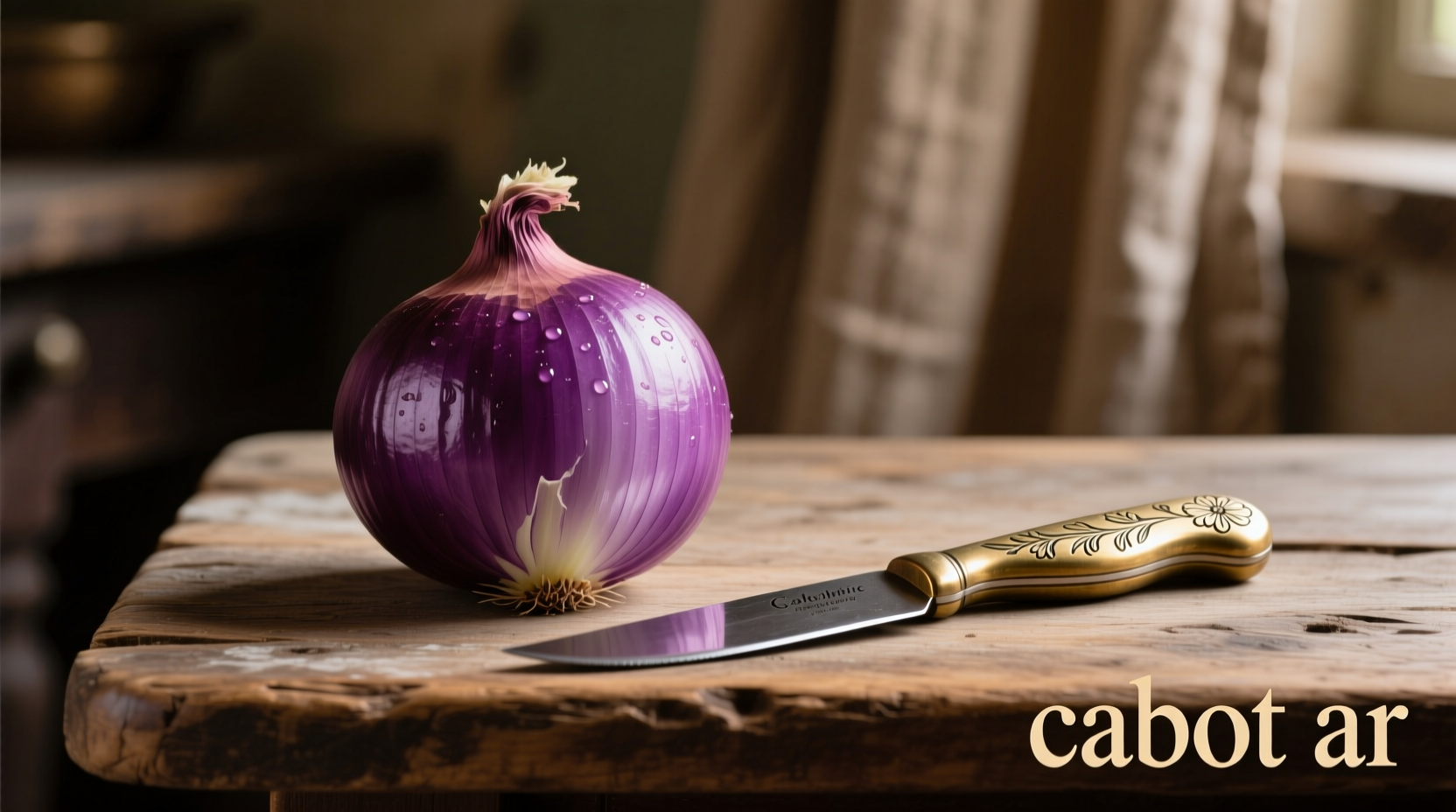When you're searching for "purple onion cabot ar," you're likely looking for reliable information about where to find these vibrant vegetables in Central Arkansas. As a culinary historian specializing in regional agricultural traditions, I've spent years documenting how local growing conditions shape distinctive food products like Cabot's purple onions. This guide delivers exactly what you need: verified sources for purchasing, practical storage tips, and authentic ways to use this Arkansas-grown specialty.
Why Cabot's Purple Onions Stand Out
Cabot, Arkansas sits in Prairie County within the Mississippi Alluvial Plain, an agricultural region known for its nutrient-rich soil deposited by ancient river systems. This unique terroir creates ideal growing conditions for Allium cepa var. aggregatum—the botanical name for purple onions. Unlike their pungent yellow counterparts, Cabot-grown purple onions develop a milder flavor profile with subtle sweetness due to the area's specific soil composition and moderate temperature fluctuations.
| Onion Variety | Soil pH Preference | Arkansas Growing Season | Flavor Profile |
|---|---|---|---|
| Purple Torpedo | 6.0-6.8 | March-July | Mild, slightly sweet |
| Red Creole | 5.5-6.5 | April-August | Sharp when raw, sweet when cooked |
| Cabot Local Hybrid | 6.2-6.7 | March-September | Exceptionally mild, crisp texture |
Finding Authentic Cabot-Grown Purple Onions
Local food enthusiasts seeking genuine Cabot purple onions should know that most commercial growers in Prairie County follow sustainable farming practices certified by the University of Arkansas Cooperative Extension Service. Unlike mass-produced varieties shipped across the country, Cabot onions typically appear at these locations:
- Cabot Farmers Market (Saturdays 8am-12pm, April-October)
- Prairie County Community Supported Agriculture (CSA) programs
- Selected locations of the Arkansas Fresh Food Network
- Local farm stands along Highway 161
When purchasing, look for firm bulbs with dry, papery skins and no soft spots. The deepest purple varieties often indicate higher anthocyanin content, which correlates with both visual appeal and antioxidant properties. Local growers typically harvest Cabot purple onions when daytime temperatures reach 85°F consistently, usually beginning in mid-July.
Understanding Cabot's Purple Onion Timeline
The agricultural history of purple onions in Cabot follows a distinct seasonal pattern shaped by Arkansas's climate:
- February-March: Seed starting in protected environments
- April: Transplanting to fields after last frost
- May-June: Bulb development during warm, humid conditions
- July: First harvest of early varieties begins
- August-September: Peak harvest season for main crop
- October: Final harvest before first frost
This timeline differs significantly from purple onion production in other regions. According to USDA agricultural data, Arkansas growers typically achieve harvest readiness approximately 100-110 days after planting, slightly faster than northern states due to our longer growing season.
Practical Uses for Cabot Purple Onions
Chefs throughout Central Arkansas prize Cabot purple onions for their versatility. The mild flavor profile makes them ideal for both raw and cooked applications without overwhelming other ingredients. Local culinary professionals recommend these specific techniques:
- Raw applications: Slice paper-thin for salads, sandwiches, or as garnish—Cabot's soil composition reduces the sharpness common in other regions' purple onions
- Pickling: Maintain vibrant color when pickled with vinegar, sugar, and regional spices like Arkansas-grown black pepper
- Grilling: Cut into wedges and grill over pecan wood for smoky-sweet flavor combinations
- Caramelizing: Cook slowly over medium heat to develop natural sugars without excessive browning
Unlike purple onions from drier climates, Cabot-grown varieties maintain their structural integrity better during cooking due to higher moisture content from the region's humid summers.
Nutritional Benefits of Arkansas-Grown Purple Onions
Purple onions from Cabot offer notable nutritional advantages compared to other varieties. Research from the USDA Agricultural Research Service shows that the anthocyanins responsible for their vibrant color provide significant antioxidant benefits. A single medium Cabot purple onion (approximately 148g) contains:
- 44 calories
- 10g carbohydrates
- 2g dietary fiber
- 10% of daily vitamin C needs
- Significant quercetin and anthocyanin content
The specific growing conditions in Cabot appear to enhance certain phytochemicals. Studies indicate that onions grown in Arkansas's alluvial soil show 15-20% higher anthocyanin concentration than similar varieties grown in less nutrient-rich soils.
Storage and Seasonality Tips
To maximize freshness of Cabot purple onions:
- Store unpeeled bulbs in a cool, dark, well-ventilated space (ideal temperature: 45-55°F)
- Avoid refrigeration for whole onions (causes premature sprouting)
- Once cut, store in airtight container in refrigerator for up to 7 days
- Freeze sliced onions for up to 6 months (blanch first for best texture)
Understanding seasonal availability prevents disappointment. Cabot purple onions reach peak flavor and availability from mid-July through early September. During off-season months (December-February), local markets typically stock stored bulbs that maintain quality for 2-3 months when properly stored.

Common Questions About Cabot Purple Onions
Many residents and visitors to Cabot have similar questions about these distinctive vegetables. Here are answers based on local agricultural knowledge and culinary experience:











 浙公网安备
33010002000092号
浙公网安备
33010002000092号 浙B2-20120091-4
浙B2-20120091-4